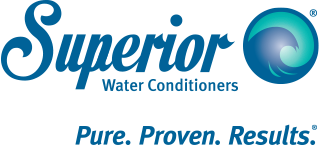As the world becomes more environmentally aware, more people are demanding that industries start using chemical-free alternatives to industrial water treatments.
Today, water treatment plants will use several chemicals to treat, clean, and process sewage and wastewater. Unfortunately, this process creates many toxic byproducts.
To get around this, companies from around the world have started finding new ways to treat wastewater. In Fort Wayne, industrial water treatment providers have started using chemical-free alternatives to their treatment systems. Here are some options for treatment plants to consider.
Anaerobic Treatments
Anaerobic Waste Water Treatment, or AWWT, is a type of treatment that is usually used in sewage and wastewater treatment plants.
AWWT uses anaerobic organisms – organisms that don’t require oxygen – to break down and digest biodegradable material in wastewater and turn it into biogas. The water is then sent to a sewage or wastewater plant for further treatment.
Bacteria are introduced into a reservoir of wastewater, where they immediately start to break down organic waste and turn it into various acids and compounds. These acids and compounds are then turned into methane gas, which can then be collected and used as a source of renewable energy.
Although AWWT can greatly reduce the amount of sludge in sewage and wastewater, it does nothing in terms of preventing scale build-up in industrial pipes.
Nanotechnology
In recent years, scientists from around the world have started using nano-based technology to help in the treatment of potable water in arid regions.
Nanotechnology is a field of science that uses microscopic materials and machines. In the case of water treatment, scientists use a variety of nanotech to provide water treatment solutions, particularly in impoverished areas of the world.
One of the more promising pieces of nanotechnology is Carbon Nanotubes or CNT. CNT’s are a form of carbon with a cylindrical nanostructure. The CNT is then deployed into wastewater, where the nanotech proceeds to absorb contaminants. CNT’s also have antimicrobial properties, and the entire process does not produce toxic byproducts.
While promising, nanotechnology for water treatment is still a long way from being used on an industrial scale for commercial or municipal wastewater treatment plants. This is due to its high production costs.
Multi-Field Magnets
The use of magnets and magnetic fields in water treatment plants has seen promising results over the past few years. Multi-field magnets reduce corrosion, scale deposits, and suspended particles in water, which can drastically reduce waste materials prior to treatment.
Water is passed through magnetized pipes, where the minerals and particles suspended in the water have their state of matter altered in such a way that they don’t turn into scale deposits. Once their state of matter is altered, the minerals form light aragonite talc which coats the bottom of pipes and other equipment, preventing free oxygen in the water from damaging metallic surfaces. The excessive solids and particles settle in the bottom and are easily removed during bleed-offs.
While magnetic field technology does not completely eradicate all bacteria or microbes from wastewater, it is one of the most promising chemical-free alternatives in the wastewater treatment industry. This is because the multi-field magnetic technology requires no chemicals, has zero toxic byproducts, and is easy to install.
In Texas, Superior Water Conditioners is the leading provider of water treatment and water conditioning solutions for industrial, commercial, and residential clients. Our services use the latest technologies coupled with over 50 years of experience in engineering and customer relations. Contact us today and we’ll provide you with the most up-to-date solution for your water conditioning needs.
